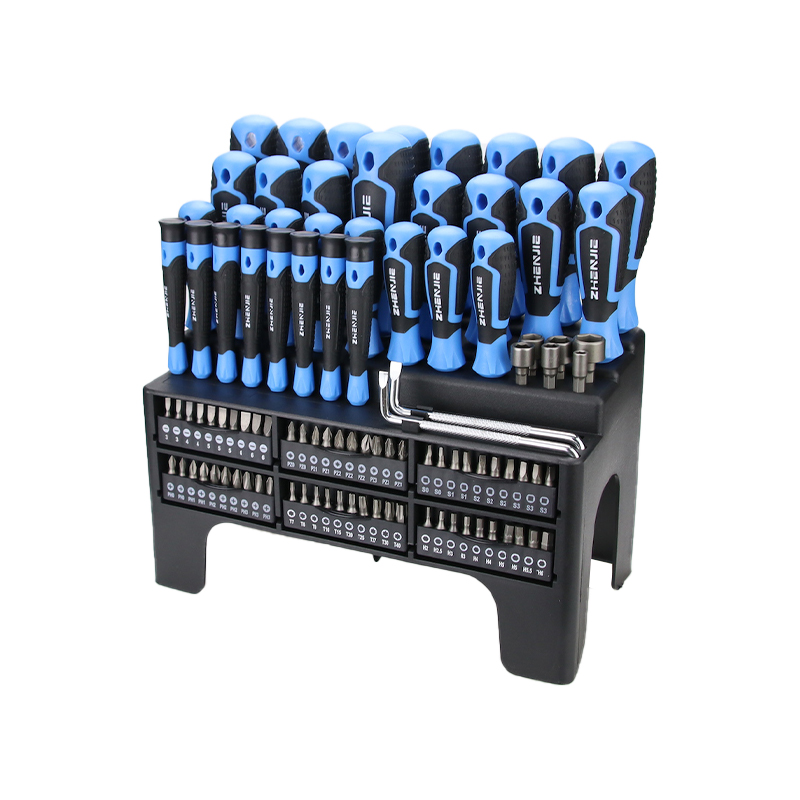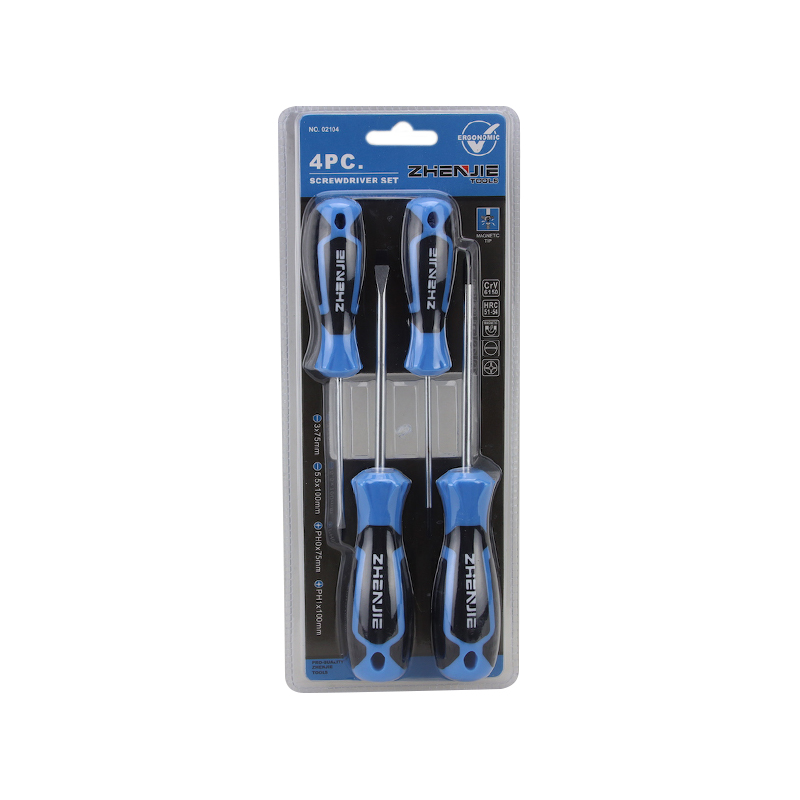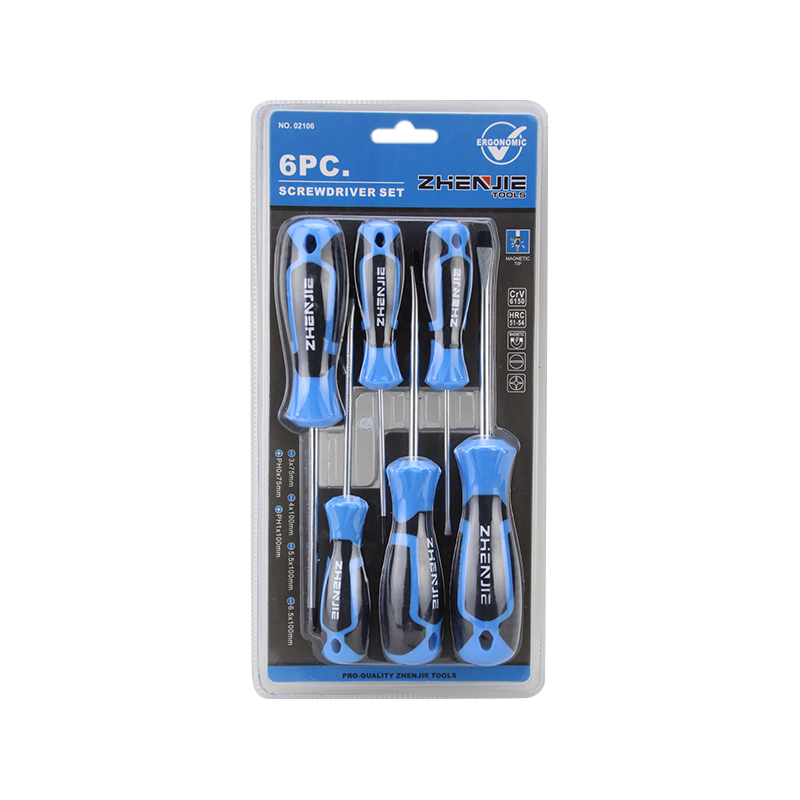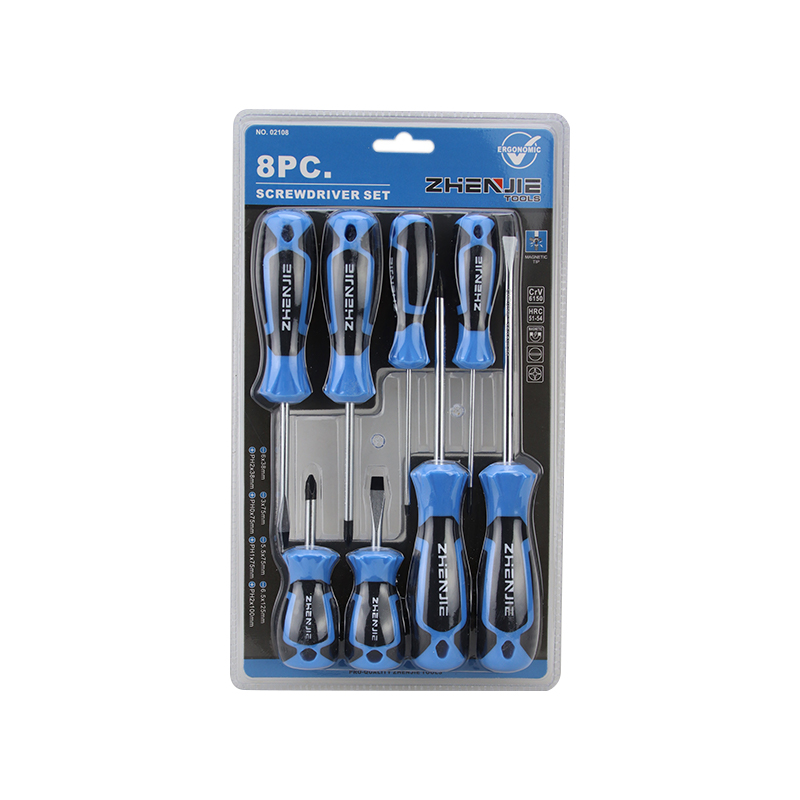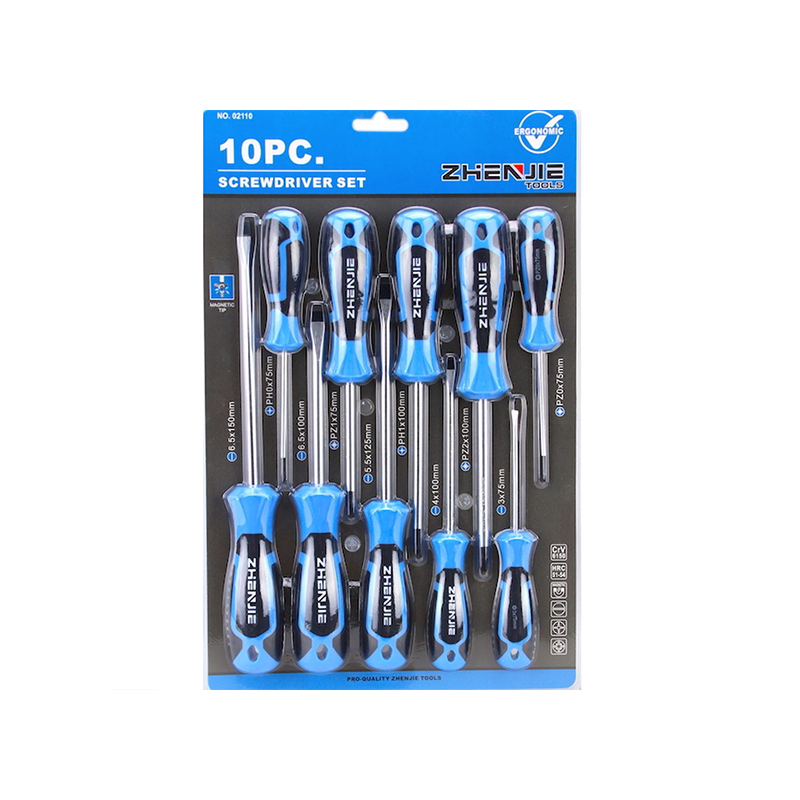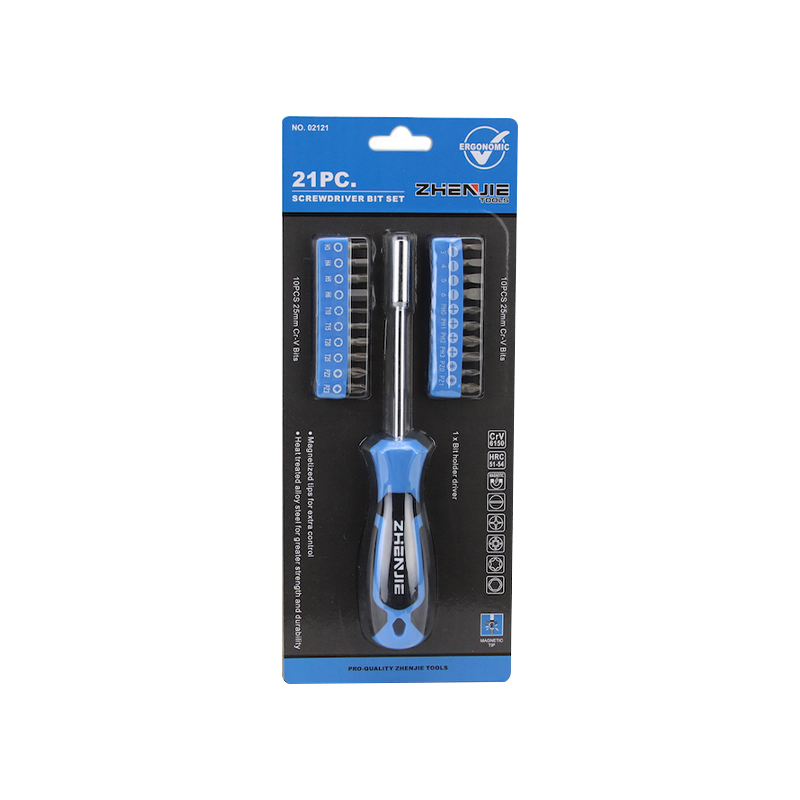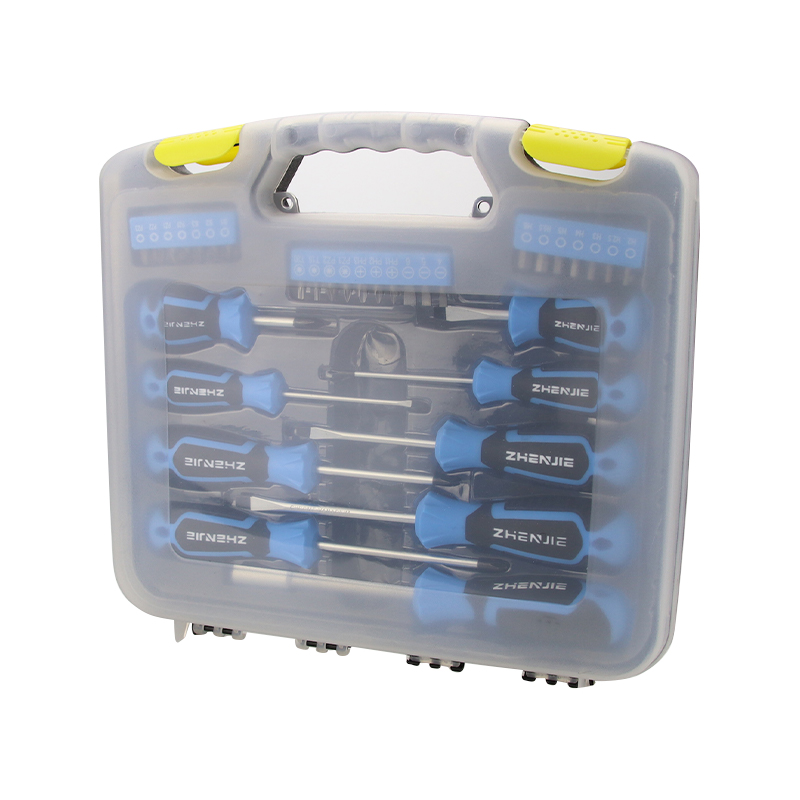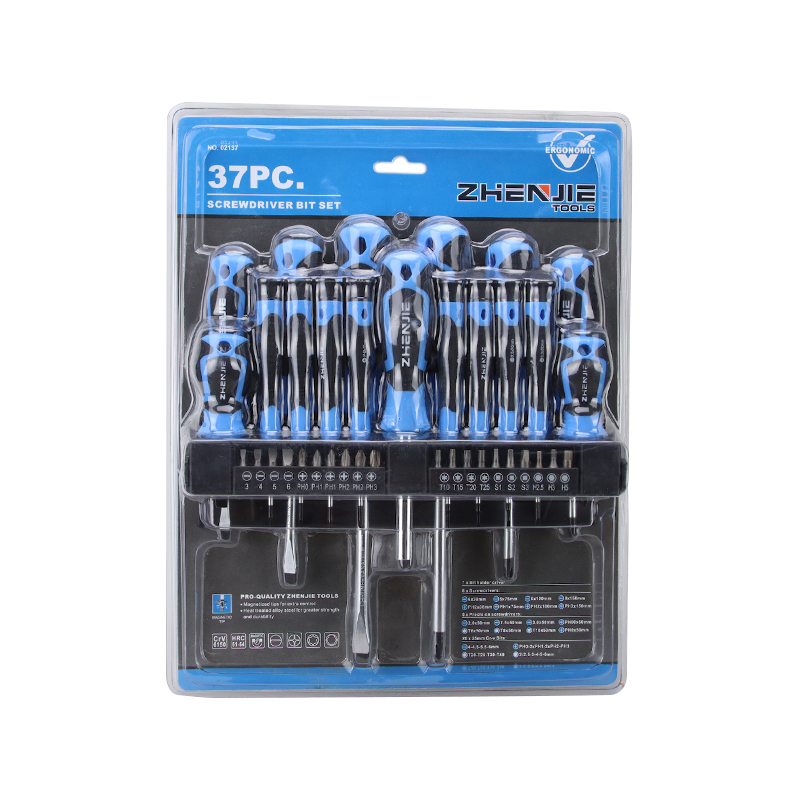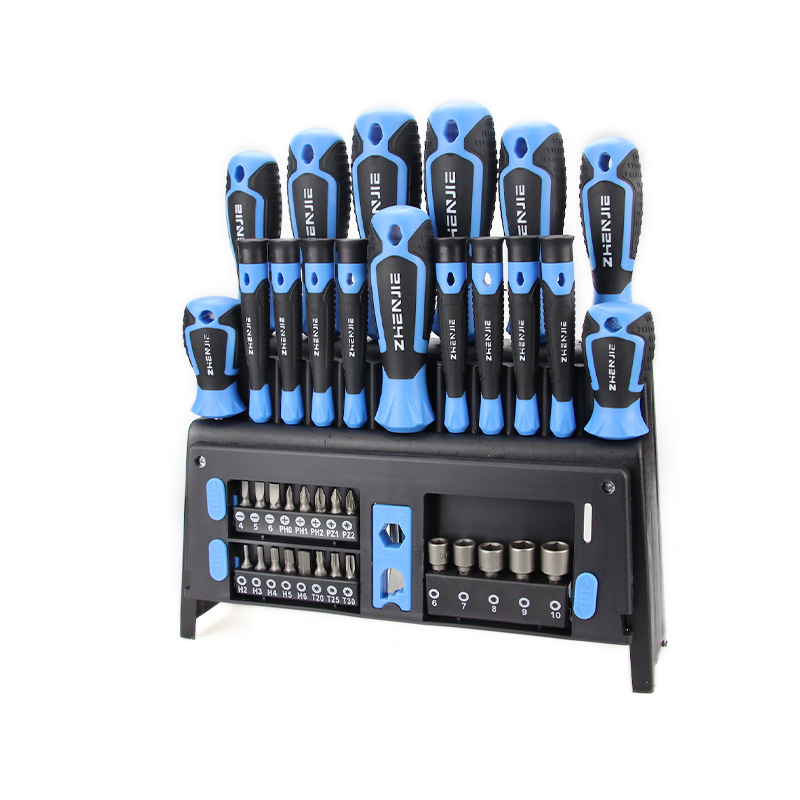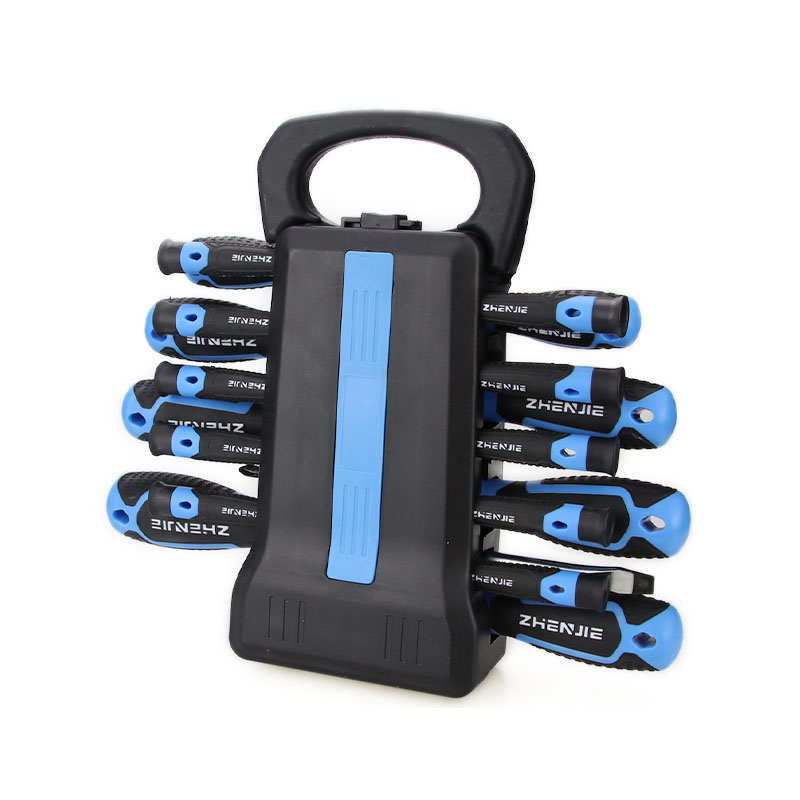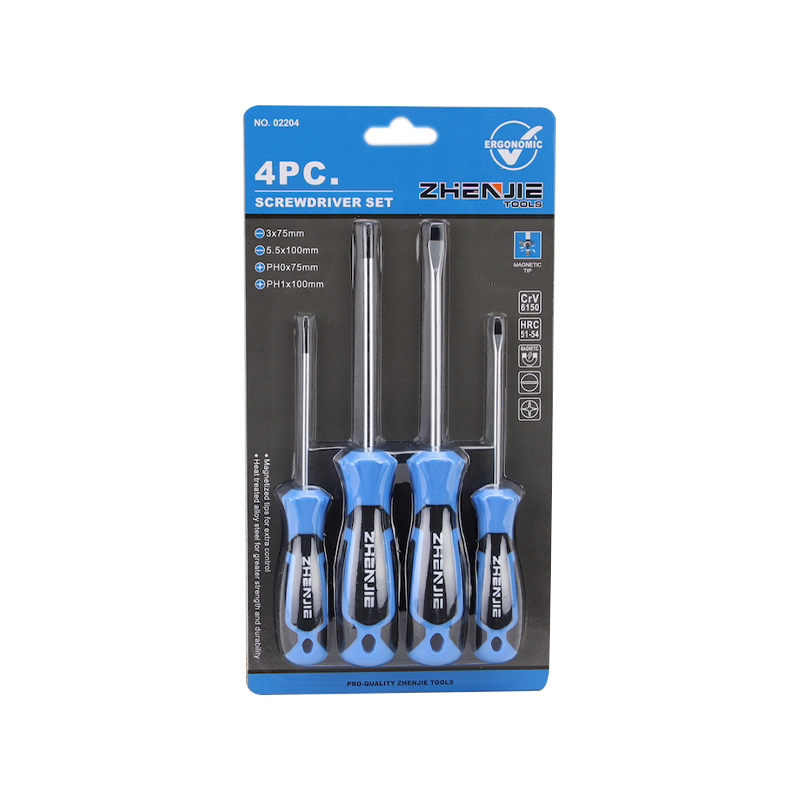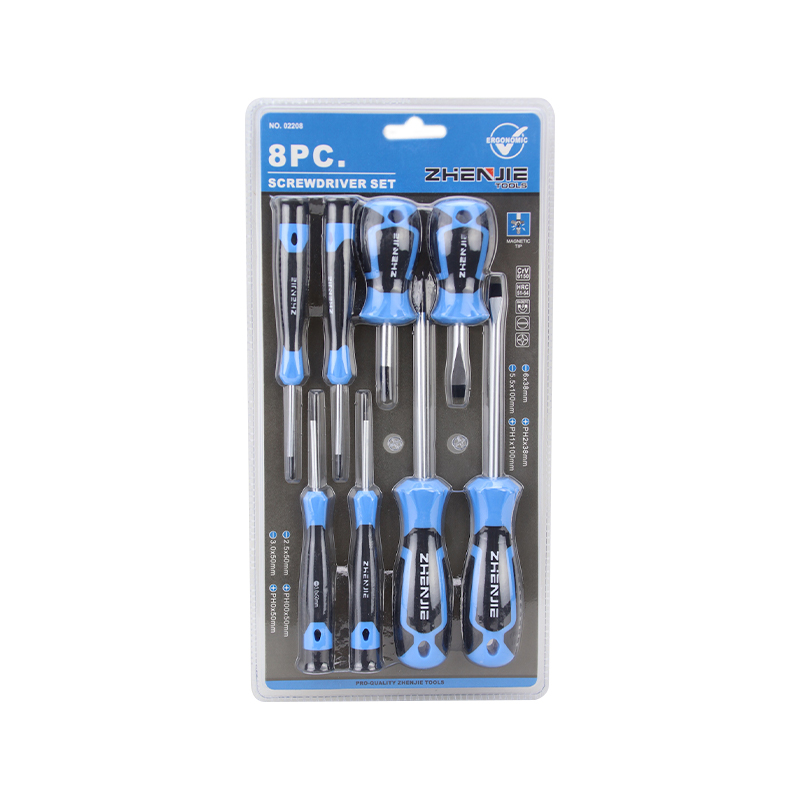In modern households, screwdrivers are no longer the exclusive domain of professional repairmen, but have become essential hand tools for every household. Due to their practicality, portability, and versatility, common household screwdrivers are widely used for furniture installation, appliance maintenance, and everyday detail repairs. With the continuous advancement of hardware tool manufacturing technology, the structural design, material selection, and user experience of household screwdrivers are also continuously being optimized.
1. Structural Principles and Functional Characteristics of Common Household Screwdrivers
The core structure of a common household screwdriver typically consists of three parts: the handle, the shaft, and the blade. Each component plays a crucial role in its user experience and durability. The handle is often ergonomically designed and coated with non-slip material, ensuring comfort and stability during prolonged operation. The shaft, the central axis connecting the handle and the blade, is typically made of high-strength alloy steel to ensure sufficient torque transmission when tightening or loosening screws. The blade directly contacts the screw, and its precision and wear resistance directly determine its accuracy and longevity.
In terms of functional features, household screwdrivers strike a balance between practicality and safety. Modern design concepts not only focus on ease of use but also enhance insulation and magnetization, ensuring stable performance in a wide range of operating environments. The use of magnetic tips ensures a more secure screw attachment, reducing the risk of slippage during operation; while the use of insulating materials enhances safety in electrical environments.
II. Technological Innovation in Screwdriver Materials
Material is a key factor influencing the performance of Household Common Screwdrivers. Traditional screwdriver shafts were mostly made of carbon steel. However, with the development of high-performance alloys and heat treatment technologies, most household screwdrivers today use chrome-vanadium steel or S2 steel as their primary materials. These metals offer increased hardness and torsion resistance, ensuring stable deformation even during high-intensity operation. Electroplating or anti-rust treatments enhance oxidation resistance and create a more lustrous appearance.
The material selection for the handle is also crucial. High-quality household screwdrivers typically utilize composite plastics such as PP and TPR, using a combination of soft and hard double-layer injection molding to ensure a comfortable feel while effectively preventing slippage and fatigue. In recent years, with the increasing use of environmentally friendly materials, some brands have begun adopting more recyclable bio-based plastics, providing a new direction for the sustainable development of the hardware tool industry.
III. Design Innovation and Intelligent Trends in Household Screwdrivers
Driven by modern manufacturing, the Household Common Screwdriver has expanded beyond traditional manual designs. Innovative features such as interchangeable bits, multifunctional combination structures, and power-assisted designs continue to emerge to meet diverse user needs.

At the same time, the emergence of intelligent screwdrivers has also driven technological innovation in the household tool sector. With features such as built-in torque detection, LED lighting, and wireless charging modules, household screwdrivers have evolved from traditional mechanical tools to "smart hand tools." This trend not only enhances ease of use but also significantly improves the precision and safety of household repairs.
IV. Optimizing Ergonomics and User Experience
High-quality household screwdrivers not only strive for excellence in materials but also incorporate user-friendly design details. The handle design of the Household Common Screwdriver has gradually evolved towards ergonomics, with curved structures, optimized force distribution, and tactile feel to reduce hand stress during operation. The length, diameter, and friction texture of the handle have all been meticulously tested and designed to ensure optimal grip stability for users of varying hand sizes.
The precise fit between the blade and the screw is also a crucial factor influencing the user experience. High-precision machining ensures a tight fit between the blade and the screw slot, minimizing slippage and wear. The magnetized blade facilitates screw engagement, significantly enhancing one-handed operation. These detailed optimizations make household screwdrivers more than just tools; they become a tool that enhances the quality of life.
V. The Extended Value of Household Screwdrivers in Everyday Life
The Household Common Screwdriver demonstrates exceptional practical value in the areas of home repair and assembly. It not only meets daily needs such as home installation and appliance maintenance, but also, due to its ease of use and high reliability, has become a vital tool for emergency repairs. With the rise of DIY culture, screwdrivers have gradually become a part of home creativity and personal expression, bringing greater autonomy and enjoyment to family life.
In the market, the household screwdriver market has formed a comprehensive product line. From entry-level basic models to high-end professional models, from single-function to multifunctional combinations, consumers can choose the product that best suits their needs. This diverse product mix has also driven brand competition and technological innovation in the hardware industry, giving the traditional screwdriver new vitality in the new era.
As an indispensable tool in household life, the development of the household screwdriver not only reflects the advancement of industrial design and manufacturing technology, but also reflects people's constant pursuit of a convenient, safe, and efficient lifestyle.

 English
English русский
русский Español
Español